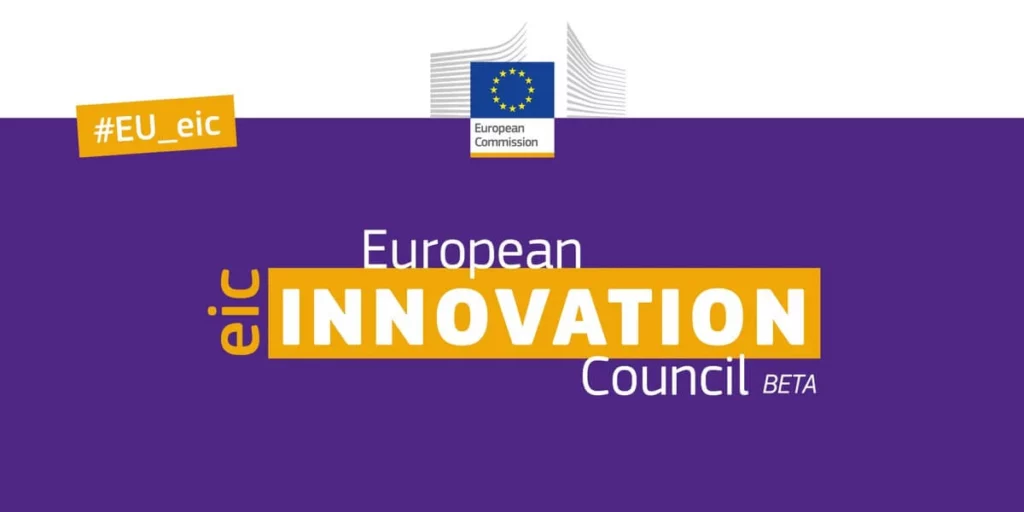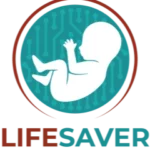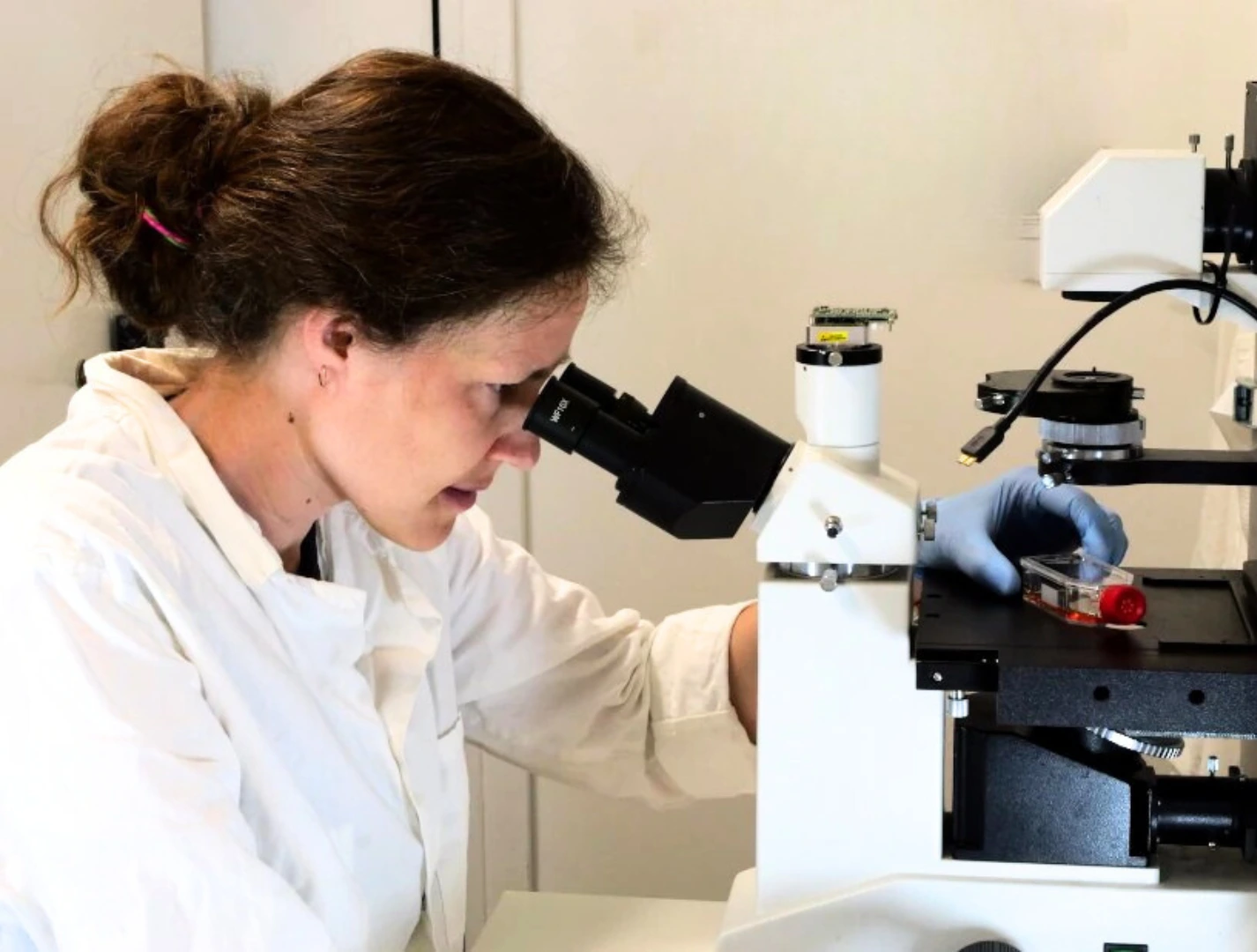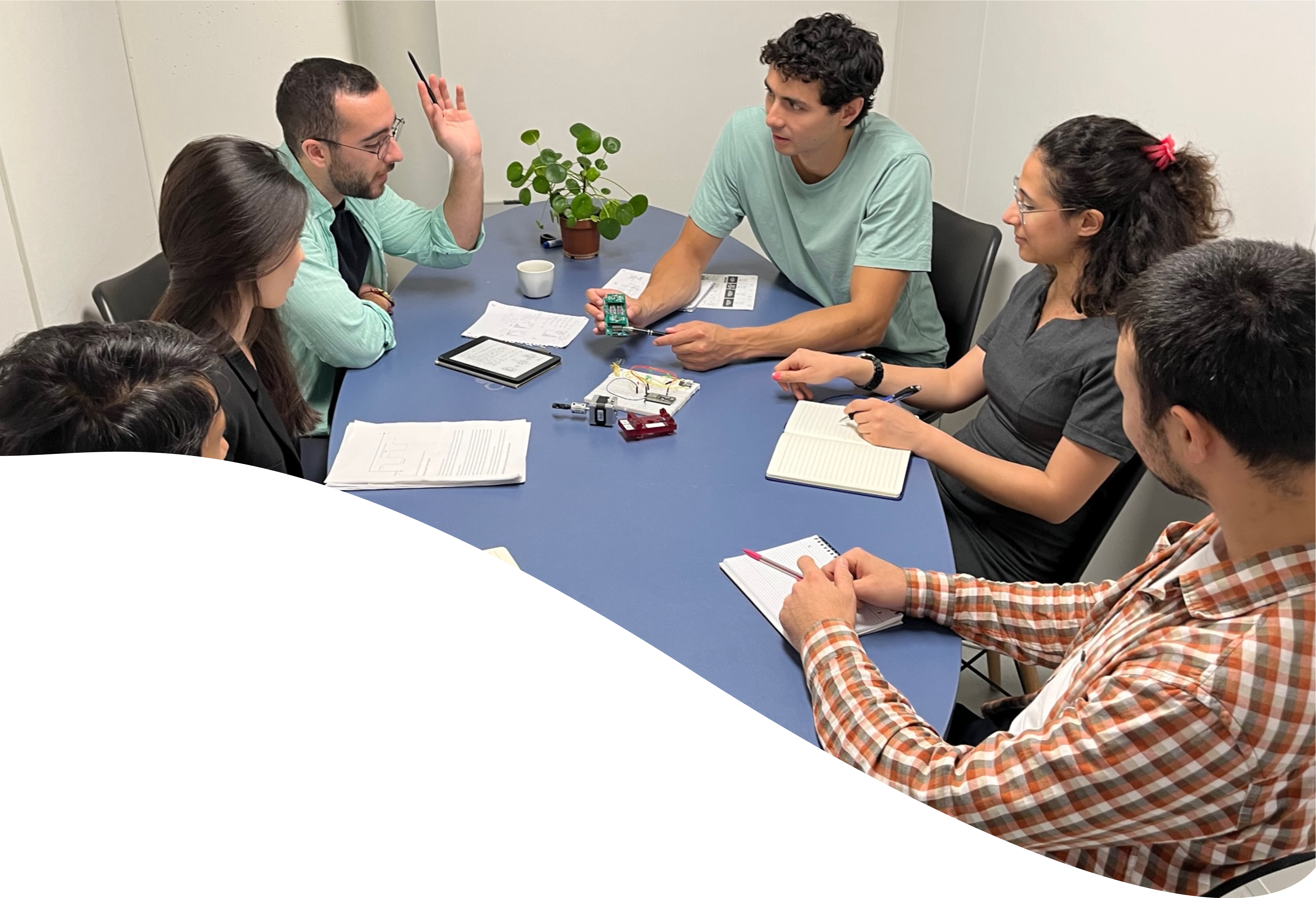European Innovation Council (EIC)
Work Programme 2026
Writer
Celeste Chidiac, PhD
Keywords
Microfluidic Devices, Intelligent Microfluidics, Artificial Intelligence, Machine Learning
Opening
Ap/Jul/Nov 2025, Feb 2026
Deadline
Jan/Feb/Mar/May/Jul/Sep/Oct/Nov 2026, Jun 2027
Keywords
Intelligent Microfluidics
Deep Learning
Microfluidic Devices
Artificial Intelligence
Machine Learning
Pathfinder challenges
Pathfinder Open
Advance Innovation Challenges
Transition Open
Accelerator Open & Challenges
STEP
Your microfluidic SME partner for Horizon Europe!
We take care of microfluidic engineering, work on valorization and optimize the proposal with you
EIC Work Programme 2026
Calls ordered by microfluidic relevance
We have categorized the calls from the European Innovation Council (EIC) work programme 2026 according to the impact that microfluidics can have on the projects and related topics. We are sharing our analysis in case it can help you with project funding efforts. And, of course, if our expertise can be of use to you, we would be delighted to discuss it further.

How to read the stars in terms of % of microfluidic technologies’ relevance for the call:
By microfluidic relevance, we mean the relevance of using microfluidic technologies for the topic cited. But also, to a lesser extent, what a microfluidic laboratory or SME could contribute to the topic (mainly for calls with low relevance to microfluidic technologies).
Relevance (%) | 90-100 | 80-89 | 70-79 | 60-69 | 50-59 | 40-49 | 30-39 | 20-29 | 10-19 | 0-9 |
Relevance (*) | ***** | **** | *** | ** | * | – | – – | – – – | – – – – | – – – – – |
The EIC work programme draft can be found in the following link: European Innovation Council – from breakthrough science to scale‑up
(Details for all topics are provided below, ordered by decreasing microfluidic relevance)
Discover more!
EIC Work Programme 2026 ordered by microfluidic relevance
Download the EIC Work Programme 2026 Call Calendar
***** II.2.2 – HORIZON‑EIC‑2026‑PATHFINDERCHALLENGES‑01 – BIOTECHNOLOGY FOR HEALTHY AGEING
- Type of action: Research and Innovation Action (RIA; lump sum).
- Call: EIC Pathfinder Challenges 2026
- Opening 28/07/2025, deadline 28/10/2026
- Budget (M€): 96 M€ across all three Challenges; approximately equal shares.
- Expected EU contribution per project: up to 4.00.
Scientific focus: The Challenge targets breakthroughs that keep people healthier for longer by preventing/delaying disease and functional decline and by enabling earlier, more precise interventions. It explicitly encourages new approach methodologies (NAMs) and microphysiological models to replace or reduce animal use and to better represent human biology across the lifespan. The text cites organoids and organ‑on‑chip systems as NAMs examples and stresses longitudinal, mechanism‑based readouts to capture ageing trajectories and heterogeneity. Expected outcomes include validated human‑relevant models and data that translate into more predictive diagnostics/therapies and public‑health impact.
Why a microfluidic partner is valuable.
- Microphysiological systems: microfluidic SMEs/academic labs can design and fabricate organ‑on‑chip/ageing‑on‑chip platforms to model immunosenescence, inflammageing, vascular stiffening, neurodegeneration, and multi‑organ crosstalk under controlled gradients and mechanical cues.
- Human‑relevant NAMs: integrate primary/tissue‑engineered cells, perfusion, dynamic shear and barrier functions to produce reproducible, human‑specific endpoints aligned with Challenge aims.
- Assay throughput & analytics: on-chip multiplexing, single-cell sampling, secretome capture, and real-time sensors reduce cost and time, improving data richness for aging biomarkers.
- Standards & translation: microfluidics entities can contribute to NAMs validation (robustness, inter-lab reproducibility), and regulatory-grade data packages, the Challenge expects.
***** IV.2 – HORIZON‑EIC‑2026‑AIC‑01 – TRANSLATING DISRUPTIVE NEW APPROACH METHODOLOGIES (NAMS) INTO PRACTICE
- Type of action: RIA (lump sum)
- Call: EIC Advanced Innovation Challenges – pilot, Stage 1 in 2026; Stage 2 planned in 2027
- Opening 15/11/2025, deadlines 18/03/2026 (Stage 1), 18/06/2027 (Stage 2).
- Budget (M€): 6 M€ in 2026 across both AIC topics; 25 M€ in 2027 across Stage 2.
- Expected budget/project: Stage 1 ≤ 0.30; Stage 2 ≤ 2.50.
Scientific focus: The pilot introduces stage-gated, ARPA-style funding to drive demand-driven deep-tech into real-world uptake. Projects co-design use cases with users and regulators/regulators and de-risk translation through feasibility studies (Stage 1) and user testing at scale (Stage 2). NAMs translation squarely targets human-relevant models (including organ-on-chip and other microphysiological systems), validation against reference methods, and pathways to adoption in industry/regulation.
Why a microfluidic partner is valuable.
- Bridge to adoption: microfluidic organisations provide validated organ‑on‑chip platforms with SOPs, QC, and inter‑lab transferability – essential for regulator/industry uptake.
- User-centred prototyping: experience integrating chips into pharma/biotech workflows (automation, readouts, data standards) aligns with the Challenge’s demand-side emphasis.
- Portfolio synergies: rapid iteration across materials, channel architectures, sensors, and multi‑organ coupling under Programme Manager guidance.
- Regulatory trajectory: alignment with NAMs acceptance frameworks (performance, reproducibility, relevance) accelerates “practice” translation.
***** II.1 – HORIZON‑EIC‑2026‑PATHFINDEROPEN‑01
- Type of action: RIA (lump sum; funding rate 100%).
- Call: EIC Pathfinder Open 2026.
- Opening 05/02/2026, deadline 06/05/2026
- Budget (M€): 166 M€.
- Expected budget/ project: up to 4.00.
Scientific focus: Open, high‑risk/exploratory research to establish proof‑of‑principle for breakthrough technologies (start TRL≈1-2 → TRL 3-4). Interdisciplinary consortia are expected; portfolio management and BAS/Booster instruments support follow-on (Transition/Accelerator).
Why a microfluidic partner is valuable.
- Microfluidics enables novel modalities (organs‑on‑a chip, single-cell processing, lab-on-chip diagnostics, microreactors) that align with Pathfinder’s “deep‑tech” ambition.
- Rapid iteration in chip design/fabrication (polymer/advanced materials; soft lithography; hybrid integration) supports radical concepts and proof‑of‑principle at low scale/time cost.
- Clear exit routes via EIC Transition and Accelerator suit microfluidic inventions that need translation and scale-up.
**** III – HORIZON‑EIC‑2026‑TRANSITIONOPEN‑01‑01
- Type of action: RIA (lump sum; 100% funding).
- Call: EIC Transition 2026 (Open).
- deadlines (2026): 07/01; 04/03; 06/05; 08/07; 02/09; 03/11.
- Opening 22/04/2025, deadline 16/09/2026
- Budget (M€): 100 M€.
- Expected budget/project: 0.5-2.5
Scientific focus: Translates eligible base‑project results (EIC Pathfinder, ERC PoC, Pillar II RIAs, etc.) from proof‑of‑concept (TRL 3-4) to validated tech in relevant environments (TRL 5-6), and develops business/market readiness. Single entities (SMEs/RPOs) or small consortia (2-5).
Why a microfluidics partner is valuable.
- Many microfluidic outputs from Pathfinder/ERC PoC require application validation (clinical, bioprocess, environmental), industrial design, and regulatory readiness. Transition funds will precisely cover these steps.
- Microfluidics entities can lead to design for manufacturing (injection moulding, bonding, QC), automation, biocompatibility, and standards to achieve TRL 5-6.
- Consortia can combine chip makers, assay owners, and end‑users to package IP, access users, and prepare Fast Track to Accelerator.
**** V.2.3 – BIOTECH FOR REGENERATING AGRICULTURAL SOILS
- Type of action: EIC Accelerator grant + equity (blended) / grant‑only / equity‑only. Grant ≤ 2.5 M€; investment 1-10 M€.
- Call: EIC Accelerator Challenges 2026.
- Deadlines (2026): 07/01; 04/03; 06/05; 08/07; 02/09; 03/11.
- Budget (M€): Challenges total 220 M€ across five areas.
- Expected budget/project: grant ≤ 2.5; investment 1-10.
Scientific focus: Targets deep‑tech solutions that restore soil health and resilience across food/feed/biomass systems, reversing biodiversity loss and pollution while boosting EU competitiveness. Expected outcomes: Scalable biotech and other deep‑tech innovations delivering measurable soil-function gains and sustainable yields.
Why a microfluidic partner is valuable.
- Soil‑on‑chip/ecosystem‑on‑chip for ex‑situ screening of microbial consortia, bio‑stimulants, and root-microbiome interactions under controlled gradients (moisture, nutrients, pollutants).
- High‑throughput screening of engineered microbes/enzymes for carbon sequestration, bio‑remediation, or nutrient cycling; micro‑bioreactors for adaptive evolution.
- Field‑deployable sensors (lab‑on‑a-chip for emerging pollutants, pathogens, or metabolite profiling) to monitor intervention efficacy.
- A Microfluidic SME could be a co-applicant (if ready for TRL 6-8) or a technology supplier for a soil-biotech lead.
** V.2.5 – DEEP TECH FOR CLIMATE ADAPTATION
- Type of action: EIC Accelerator
- Call: EIC Accelerator Challenges 2026
- Deadlines (2026): 07/01; 04/03; 06/05; 08/07; 02/09; 03/11.
- Budget (M€): 220 M€ across five Challenges.
- Expected budget/ project: grant ≤ 2.5; investment 1-10.
Scientific focus: Backs startups/SMEs scaling adaptation solutions: urban heat mitigation, climate-smart agriculture (including microbial/biological approaches), water scarcity (reuse/filtration sensitive to emerging pollutants), and flood/coastal protection; links innovators to regions/cities via BAS/innovation procurement.
Why a microfluidic partner is valuable.
- Water‑quality lab‑on‑chip for rapid detection of PFAS, microplastics, pathogens, and emerging pollutants in reuse systems.
- On‑farm microfluidic analytics for soil moisture, salinity, and nutrient flux; micro‑bioreactors for beneficial microbe formulations.
- Biosensing networks: low-power microfluidic cartridges integrated with IoT to inform adaptive management; complements adaptation priorities.
* IV.1 – HORIZON‑EIC‑2026‑AIC‑01 – ACCELERATING PHYSICAL AI: EMBODIED INTELLIGENCE FOR THE NEXT FRONTIER OF AI‑POWERED ROBOTICS
- Type of action: Stage 1 & Stage 2 are RIAs
- Call: AIC pilot, Stage 1 in 2026; Stage 2 planned in 2027.
- Opening 15/11/2025, deadlines 18/03/2026 (Stage 1), 18/06/2027 (Stage 2).
- Budget (M€): 6 M€ in 2026 across both AIC topics; 25 M€ in 2027 across Stage 2.
- Expected budget/ project: Stage 1 ≤ 0.30; Stage 2 ≤ 2.50.
Scientific focus: Drives embodied AI in robotics by validating disruptive approaches, then scaling a subset in Stage 2 via user‑testing. Emphasizes integrated hardware/software stacks, sensing/actuation, learning & control, and application-driven benchmarking.
Why a microfluidic partner is valuable.
- Soft microfluidic actuators/valves and pneumatic/hydraulic microsystems enable compliant, bio-inspired robotic components aligned with “physical AI”.
- On-chip sensing (flow, pressure, chem/bio) for autonomous environmental or biomedical robots.
- Rapid fabrication (moulding/lamination of elastomers and polymers) to iterate robot morphologies.
* II.2.1 – HORIZON‑EIC‑2026‑PATHFINDERCHALLENGES‑01- ADVANCED MATERIALS FOR MINIATURISED ENERGY HARVESTING SYSTEMS
- Type of action: RIA (lump sum).
- Call: EIC Pathfinder Challenges 2026.
- Opening 28/07/2025, deadline 28/10/2026
- Budget (M€): 96 M€ across three Challenges; approx. equal shares.
- Expected budget/ project: up to 4.00.
Scientific focus: Calls for advanced materials enabling miniaturized energy harvesters (solar, thermoelectric, piezo/tribo, EM‑wave, etc.) integrated into autonomous wireless sensors/IoT, benchmarking lab‑scale use cases to TRL 4 while reducing CRM’s use.
Why a microfluidic partner is valuable.
- Microfabrication & integration: polymer microfabrication and thin-film processes used in microfluidic chips translate to micro-harvester module manufacture and packaging.
- System-on-chip: expertise in integrating microstructures, channels, and sensors helps connect harvesters with low-power sensor nodes, fluidic cooling, or self-powered biosensors.
- Benchmarking rigs: microfluidic testbeds to apply controlled thermal/flow/mechanical stimuli for harvester characterization, matching Challenge’s benchmarking priority.
* V.1 – EIC ACCELERATOR OPEN
- Type of action: EIC Accelerator grant + equity / grant‑only / equity‑only
- Call: EIC Accelerator Open 2026
- Deadlines (2026): 07/01; 04/03; 06/05; 08/07; 02/09; 03/11.
- Budget (M€): 414 M€ (165 M€ grant / 249 M€ equity).
- Expected budget/ project: grant ≤ 2.5; investment 1-10; 70% grant co‑funding; investment terms via EIC Fund.
Scientific focus: Supports single startups/SMEs with high-risk innovations (TRL 6-8) towards market deployment & scale‑up, via blended finance and BAS.
Why a microfluidic partner is valuable.
- Lab‑to‑fab transition for diagnostic chips, organ-on-chip instruments, micro‑bioprocessing; aligns with TRL 6-8 needs (verification, validation, regulatory/quality, supply chain).
- While not a consortium RIA, microfluidic SMEs can apply directly; partnerships with assay owners/clinics/industrial users strengthen market traction.
* V.2.1 – ADVANCED MATERIALS FOR RENEWABLE ENERGY AND ENERGY STORAGE SYSTEMS
- Type of action: EIC Accelerator
- Call: EIC Accelerator Challenges 2026.
- Deadlines (2026): 07/01; 04/03; 06/05; 08/07; 02/09; 03/11.
- Budget (M€): 220 M€ across Challenges.
- Expected budget / project: grant ≤ 2.5; investment 1-10.
Scientific focus: Scales advanced materials for energy generation (e.g., PV, wind) and mid‑/long‑duration storage, with strong sustainability/circularity metrics and reduced CRMs.
Why a microfluidic partner is valuable.
- Materials discovery: microfluidic reactors for combinatorial synthesis and rapid screening (electrolytes, coatings, nano‑materials).
- Thermal management/encapsulation skills from lab-on-chip translate to module packaging and reliability testing frameworks.
-VI – EIC STRATEGIC TECHNOLOGIES FOR EUROPE PLATFORM (STEP) SCALE UP CALL
- Call: STEP Scale Up 2026 (one batch per quarter).
- Deadlines (2026): 11/02; 06/05; 09/09; 25/11.
- Budget (M€): 300 M€ (2026).
- Expected budget/ project (M€): Investment via EIC Fund (10-30 M€) to catalyze rounds of 50-150 M€ (3-5× leverage), targeting digital/deep‑tech, clean/resource‑efficient (incl. net‑zero) and biotechnologies.
Scientific focus: Scale-up financing for strategic technologies (including biotech), complementing the Accelerator; the same indirect management provisions as the Accelerator apply to the investment component.
Why a microfluidic partner is valuable.
- Suitable for late‑TRL microfluidics firms (manufacturing lines, regulatory approvals, global deployment of instruments/cartridges).
- Not a consortium RIA; relevant when the microfluidics SME is ready to scale commercially.
– – V.2.4 – BOOSTING THE EUROPEAN CRITICAL RAW MATERIALS VALUE CHAIN
- Type of action: EIC Accelerator
- Call: EIC Accelerator Challenges 2026.
- Deadlines (2026): 07/01; 04/03; 06/05; 08/07; 02/09; 03/11.
- Budget (M€): 220 across Challenges.
- Expected budget / project: grant ≤ 2.5; investment 1-10.
Scientific focus: Seeks deep‑tech innovations across exploration → extraction → refining → recycling to meet Critical Raw Materials Act benchmarks; includes bioleaching, phytomining, and advanced separation to improve EU strategic autonomy.
Why a microfluidic partner is valuable
- Microreactors for intensified hydrometallurgy/biometallurgy; on‑chip separations (membrane/μ‑electrophoresis) for rapid feedstock characterization; inline sensing for process control.
– – II.2.3 – HORIZON‑EIC‑2026‑PATHFINDERCHALLENGES‑01 – DEEPRAP: DEEP REASONING, ABSTRACTION & PLANNING TOWARDS TRUSTWORTHY COGNITIVE AI SYSTEMS
- Type of action: RIA (lump sum).
- Call: EIC Pathfinder Challenges 2026
- Opening 28/07/2025, deadline 28/10/2026
- Budget (M€): 96 M€ across Challenges.
- Expected budget / project: up to 4.00.
Scientific focus: Aims to achieve human-like cognitive capacities (reasoning, abstraction, planning) via hybrid symbolic-subsymbolic AI, better training regimes, new evaluation of generalization/robustness, and hardware–software stacks; with attention to trust, safety, and explainability.
Why a microfluidic partner is valuable
- Microfluidics can serve as complex physical testbeds for AI-driven scientific discovery (closed-loop experiment design, active learning, robotic pipetting on‑chip), but fit is indirect relative to core AI goals.
– – – – V.2.2 – ALTERNATIVE CONCEPTS & KEY ENABLING TECHNOLOGIES FOR FUSION POWER PLANTS
- Type of action: EIC Accelerator
- Disclaimer: evaluated in the last two 2026 batches (02/09 & 03/11).
- Call: EIC Accelerator Challenges 2026.
- Deadlines (2026): 07/01; 04/03; 06/05; 08/07; 02/09; 03/11.
- Budget (M€): 220 M€ across Challenges.
- Expected budget / project: grant ≤ 2.5; investment 1-10.
Scientific focus: Supports fusion startups/SMEs on alternative reactor concepts (magnetic/inertial/magneto‑inertial), advanced materials for extreme environments, tritium cycle, high‑power lasers, plasma components, magnets, and digital twins/AI.
Why a microfluidic partner is valuable
- Limited fit; niche contributions (e.g., micro‑cooling/micro‑channel thermal management or materials screening reactors) are possible but peripheral to core fusion tech.
Notes for your team
Consortia vs single‑applicant: Only Pathfinder (Open & Challenges), Transition, and AIC are consortium‑friendly R&I actions. Accelerator and STEP are primarily single‑company instruments (though partnering suppliers/end‑users helps). This matters if you aim to join a consortia.
Find all these information in the pdf below
The MIC already brings its expertise in microfluidics to Horizon Europe:
H2020-NMBP-TR-IND-2020

Microfluidic platform to study the interaction of cancer cells with lymphatic tissue
H2020-LC-GD-2020-3

Toxicology assessment of pharmaceutical products on a placenta-on-chip model
FAQ - Horizon Europe EIC 2026-2027 ordered by microfluidic relevance
Which EIC parts look most promising for microfluidics?
- Pathfinder (open & challenge): bold, cross-disciplinary ideas, organ-on-a-chip, single-cell tools, intelligent microfluidics, new assay modalities.
- Transition: getting proven ideas off the bench, manufacturability, reliability, standards, and regulatory steps.
- Accelerator: SMEs scaling hardware + software products (diagnostics, environmental sensing, bioprocess analytics) with a clear route to market.
Pathfinder, Transition, or Accelerator - what fits your needs best?
Mostly, it comes down to how ready your tech really is. If you have a solid concept but the basic demo isn’t quite there yet, Pathfinder makes sense. When EU-backed findings are confirmed and set for real-world trials, that’s where Transition steps in. For small firms shaping actual products, running first tests or working with initial customers – and showing clear potential to grow fast – Accelerator works best, whether through funding, investment, or a mix. If your concept shows up in all three areas, scale it back. Define how far along it is, strengthen the evidence that it works, and make the benefit clearer.
Which tiny fluid tech subjects are clearly evident in the 2026 requests?
Microphysiological setups show up a lot – organ-on-a-chip, or models that mimic aging. Alongside these, there’s fast screening using gradients to push testing speed. Soil-/ecosystem-on-chip helps tweak microbial strains, while chip-sized sensors monitor water quality and contaminants. Some go further, building mini ecosystems on chips aimed at smarter farming under changing climates. On top of that, automated tools are feeding data straight into AI pipelines. What ties it all together? Realism in results, scale in output, plus practical use outside the lab.
How do consortia and roles typically look?
- Pathfinder: interdisciplinary teams (materials, biology, control, data) pushing methods forward.
- Transition: compact group, chip designers, assay/biology owner, one end user, or validation site.
- Accelerator: SME-led; suppliers, pilot sites, and regulatory partners pulled in as needed.
In all cases, a microfluidic SME that can build-test-iterate fast de-risks the plan.
What makes proposals succeed or fail?
Winners connect tiny fluid systems to actual problems people face. Instead of tacking it on later, they build testing, production methods, and data rules right into the design from day one. By bringing users onboard fast, they nail down requirements and checklists as a team effort. The others? Fancy tools with no obvious purpose – or groups who keep delaying safety checks and approvals, hoping someone else handles it downstream
Where does the Microfluidics Innovation Center (MIC) fit?
MIC moves quickly as an R&D teammate – shaping designs together, fabrication, automation, linking sensors, and also pushing data and smart algorithms for sharp microfluid tools. In European team-ups, a focused, small player such as MIC fills the fuzzy space from idea to a working model you can copy.
How to hit 2026 goals without going overboard?
Keep things tight. A single working model you can show trumps half-baked mockups – go for one that counts. Set up your testing space and what success looks like right from the start. Think of consistent results, agreed-upon methods, and feasibility as key checkpoints along the way, not admin chores. When AI’s part of it, prep the data so it’s good to go: track changes in steps, align sensors properly, and know how much wiggle room there is in measurements.
What should you give us so we can begin building a plan?
Two pages should cover it. Start by explaining the gap that’s still there, plus who’ll actually use this thing. Spell out how you’re measuring “better” so folks can see real results – not just hype. Let us know where things stand right now, tech-wise, using the TRL scale. Then map what gets tested or proven within 18 months flat. Slide in a nod to demand – like which customers are already leaning in or ready to adopt. With that set, draft the microfluidics design, lay out how checking works step-by-step, then piece together the cash flow stages, from early Pathfinder money through Transition into Accelerator, all timed like dominoes falling when needed.



